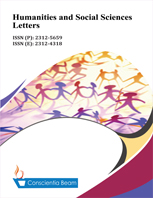Mediating effects of employees’ education on service quality and customer satisfaction: A study of resorts in Nepal
DOI:
https://doi.org/10.18488/73.v11i3.3516Abstract
This study was conducted to measure the mediating effect of employees’ education on their service quality and customer satisfaction at selected resorts in Nepal. Six components of the contextualized SERVQUAL instrument were used to measure service quality and customer satisfaction. All components of service quality were not significant, with a positive direction for all components of customer satisfaction. However, service quality in terms of responsiveness was positively correlated to all six components of customer satisfaction. Assumptions of regression analysis were satisfied with education status, service quality in terms of responsiveness, and customer satisfaction. Therefore, to measure the mediating effect of employees’ education on service quality and customer satisfaction, Hayes’ simple mediation process model and multiple mediation analysis model-4 were used in this study, taking service quality in terms of responsiveness. To justify the results, segregated effects of employees’ education status and its covariates were identified. In order to isolate the impact of employees’ educational status, six covariates were employed: gender, age, ethnicity, experience, training, and professional education. The desegregated mediating effect of education status was 16.26% positive change on the dependent variable, customer satisfaction, whereas the segregated effect was 11.32% employing a simple mediation process model and a multiple mediation analysis model, respectively. Therefore, a positive and significant mediating effect of employees’ education status was revealed on service quality in terms of responsiveness and all components of customer satisfaction in the resorts of Nepal.

